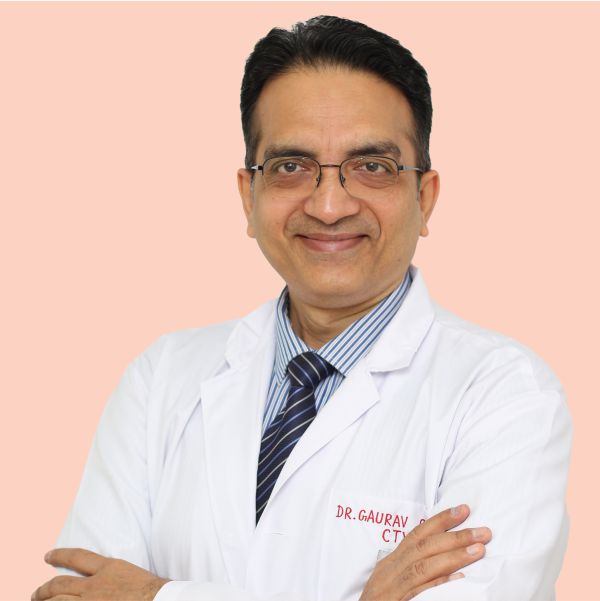Coronary Artery Bypass Graft Surgery, commonly known as CABG or heart bypass surgery, is a life-saving procedure used to treat severe coronary artery disease (CAD). CAD occurs when the blood vessels supplying the heart muscle (coronary arteries) become narrowed or blocked by fatty deposits, restricting blood flow. CABG involves creating new pathways, or bypasses, to restore proper blood flow to the heart muscle, effectively bypassing the obstructed vessels.
Understanding Coronary Artery Disease (CAD)
Coronary artery disease is a progressive condition characterized by the accumulation of plaque, which is made up of cholesterol, calcium, and other substances, on the inner walls of the coronary arteries. This buildup narrows the arteries, reducing the amount of oxygen-rich blood that reaches the heart muscle. Over time, CAD can lead to angina (chest pain), shortness of breath, and in severe cases, heart attacks.
Who Are The Best Candidates for CABG
CABG is recommended for individuals with severe coronary artery disease who have not responded adequately to medical treatment or less invasive interventions. Common indications for CABG include:
- Multiple Blockages: When multiple coronary arteries are significantly narrowed or blocked, CABG can provide comprehensive revascularization by creating bypasses around these obstructions.
- Left Main Coronary Artery Disease: If the left main coronary artery, which supplies a large portion of the heart, is severely narrowed, CABG may be the preferred treatment to ensure adequate blood flow.
- Unstable Angina or Heart Attack: For individuals experiencing acute coronary events, CABG can quickly restore blood flow and prevent further damage to the heart muscle.
- Failed Previous Interventions: In cases where previous interventions such as angioplasty and stenting have not provided lasting relief, CABG may be considered.
The CABG Procedure
CABG is typically performed under general anaesthesia and involves the following steps:
- Harvesting Grafts: The surgeon selects grafts, which are healthy blood vessels used to create bypasses. These can be arteries (usually the internal mammary artery) or veins (often taken from the leg).
- Establishing Bypasses: The grafts are carefully connected to the coronary arteries. One end of the graft is attached to the aorta, the main artery leaving the heart, while the other end is attached below the blockage.
- Ensuring Adequate Blood Flow: By creating new pathways, the grafts effectively bypass the narrowed or blocked sections of the coronary arteries, restoring proper blood flow to the heart muscle.
- Monitoring and Testing: Throughout the procedure, the heart's activity is closely monitored. After completing the bypasses, the surgeon may perform tests to ensure they are functioning properly.
- Closure: The chest is then closed, and the incision is sutured. In some cases, a temporary external pacing wire may be placed to support the heart's electrical activity during recovery.
Advantages of CABG
- Comprehensive Revascularization: CABG provides a thorough and complete solution for severe CAD, creating bypasses around multiple blockages.
- Long-Term Success: CABG is associated with excellent long-term outcomes, often providing lasting relief from angina and reducing the risk of future heart attacks.
- Improved Quality of Life: Many patients experience a significant improvement in their quality of life after CABG, with reduced symptoms and increased exercise tolerance.
- Reduced Medication Dependency: Following successful CABG, some patients may require fewer medications to manage their heart condition.
Post-Operative Recovery and Lifestyle Changes
After CABG, patients typically spend 5 to 7 days in the hospital for recovery and monitoring. They are gradually encouraged to resume normal activities, with a focus on cardiac rehabilitation to improve strength and endurance.
Lifestyle changes, including a heart-healthy diet, regular exercise, smoking cessation, and medication adherence, are essential for long-term success after CABG.
In conclusion, Coronary Artery Bypass Graft Surgery is a highly effective and well-established procedure for treating severe coronary artery disease. By creating new pathways for blood flow around blocked arteries, CABG restores vital oxygen supply to the heart muscle, alleviating symptoms and reducing the risk of future heart-related complications. With advances in surgical techniques and perioperative care, CABG continues to be a cornerstone in the treatment of advanced coronary artery disease, offering renewed hope and improved quality of life for countless patients.
Call 011-42888888 to book an appointment with a specialist at Sri Balaji Action Medical Institute.

